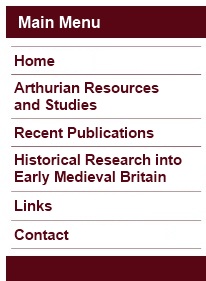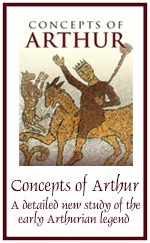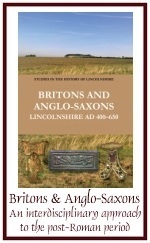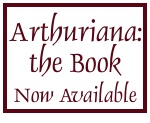
 |
 |
Myrddin
& Merlin: A Guide to
the Early Evolution of the Merlin Legend
The Merlin legend and its associated prophecies can be split into two main phases. The first is the definitely pre-Galfridian Welsh stage in which Merlin (Welsh Myrddin) is conceived of as a legendary prophet. The second is the transformation of this Myrddin, by Geoffrey of Monmouth, into an internationally renowned wizard and vaticinator named Merlin who plays a crucial role in bringing about the conception of Arthur and who is prominent in later Arthurian story. We do not possess a prose version of the Myrddin legend in Middle Welsh, but it has been argued that a general idea of its contents can be deduced from a number of allusions found in six medieval poems which, combined with Scottish and Irish versions of the tale, make possible a reconstruction of its main outline. These poems are Yr Afallennau ('The Apple-trees'); Yr Oianau ('The Greetings'); Ymddiddan Myrddin a Thaliesin ('The Dialogue of Myrddin and Taliesin'); Cyfoesi Myrddin a Gwenddydd ei Chwaer ('The Conversation of Myrddin and his Sister Gwenddydd'); Gwasgargerdd fyrddin yn y Bedd ('The Diffused Song of Myrddin in the Grave'); and Peirian Faban ('Commanding Youth'). The first three can be found in the thirteenth-century Black Book of Carmarthen and the remaining three occur in manuscripts dating from succeeding centuries. However, all the poems contain material that is probably considerably older than the dates of the written texts and they all furthermore include both legendary and prophetic material (with the legendary matter being undoubtedly older than the prophetic), the proportions of which vary from poem to poem. In most of these poems the subject – who is either named as Myrddin or is generally assumed to be him – is portrayed as a Wild Man of the Woods living in Coed Celyddon (the 'Caledonian Forest'), where he has fled to after losing his reason ('wandering with madness and madmen') in the northern battle of Arfderydd, fought between rival chieftains c. 573 A.D.; with this lapse into madness Myrddin is said to have acquired the gift of prophecy. The antiquity of these traditions is however suspect, at least in their attachment to Myrddin. In Scottish sources there is a virtually identical tale of a Wild Man to that summarized above, but in these he is named Lailoken rather than Myrddin. It has been convincingly argued by Jarman that the above traditions of a prophetic wild man, which are attached to the name Myrddin, originally belonged to this Lailoken alone; it was only when the legend of Lailoken was transported to Wales, along with other northern saga material, that these traditions were attached to the name Myrddin. Jarman suggests that this occurred in ninth or tenth century; Padel, in contrast, has recently contended that this happened in the mid-twelfth century, but equally agrees that these tales originally belonged to Lailoken (see further below). The question therefore must become 'who was the original Welsh Myrddin, if he is not the prophetic Wild Man of the poems?' The solution to this problem lies in the name Myrddin itself. The name Myrddin derives from the place-name Caer-fyrddin, 'Carmarthen' (Dyfed), and this clearly puts Myrddin in the same category as such figures as Port (a personal name derived the place-name Portsmouth), that is an eponymous founder-figure invented to explain a place-name – there is no possibility that Caer-fyrddin was named because of Myrddin, despite medieval speculation to the contrary. It further seems very likely that this figure was credited with some powers of prophecy previous to his association with the legends of Lailoken, the prophetic Wild Man. This is necessary both to account for the substitution of Myrddin's name in the Lailoken material, and also because of those few references to Myrddin that occur outside of the six poems mentioned above: most important of these is the ascription of a prophecy to Myrddin in the c. 930 Dyfed poem Armes Prydein. With the above in mind we can now turn to the accounts of Geoffrey of Monmouth. Geoffrey of Monmouth first mentions Merlin (Merlinus, based on the variant form of Myrddin, Merddin, adjusted by Geoffrey to avoid a unfortunate similarity in form to French merde) in his Historia Regum Britanniae of c. 1138, in which the mid-fifth-century British king Vortigern finds that the only way for the foundations of his fortress to be made secure is to sprinkle the blood of a fatherless youth onto the stones. Such a youth is found at Carmarthen named Merlin, whose mother, Geoffrey tells us, was the daughter of the king of Dyfed. She, living with the nuns at a local convent, had been impregnated by an incubus demon i.e. Merlin was fatherless. This child was further found to have prophetic powers and Geoffrey makes him utter the Prophetiae Merlinus, a long series of obscure prophecies. The essentials of this tale were not products of Geoffrey's imagination, but had rather been lifted bodily from the Historia Brittonum (written c. 829-30), with contractions and expansions here and there, including the addition of the Prophetiae Merlinus. There are however two major changes that give the story an entirely new direction. Firstly, in the Historia Brittonum the fatherless youth is named as Ambrosius, not Myrddin/Merlin. Secondly, in the Historia Brittonum the youth is found in Glywysing (i.e. Glamorgan), not at Carmarthen in Dyfed. Thus it seems clear that the Merlin of Geoffrey's Historia Regum Britanniae was a result of Geoffrey identifying the Historia Brittonum's Ambrosius with Myrddin in his earliest form as the prophetic eponymous founder-figure of Carmarthen. Of course Geoffrey didn't simply leave his portrayal of Merlin with this – he can be seen to have added various other elements, such as Merlin's involvement with the conception of Arthur and with the transportation of the Stonehenge stones, which have no parallel in the pre-Galfridian material, thus transforming how later generations would view this figure. Geoffrey's interest in Merlin appears to have continued after the completion of his Historia and in his Latin poem of c. 1150, Vita Merlini, he presents a portrait of Merlin totally at variance with that in the Historia. The Merlin of this poem is clearly the same person as the Myrddin of the Welsh poems: both are Wild Men of the woods who have lost their reason in battle and subsequently live in the forest of Calidon or Celyddon; both converse with the famed poet and reputed vaticinator Taliesin; both are associated with animal companions and apple-trees; and the characters that figure in the Welsh poems (Gwenddolau, Rhydderch and Gwenddydd) are clearly present in the Vita Merlini. There are, naturally, many points of divergence, but the general relationship is clear. The key question is what does this mean? How did this come about? Jarman holds that, when writing his Historia c. 1138 Geoffrey was only slightly acquainted with the Myrddin legends and this acquaintance merely amounted to knowledge of the belief at Carmarthen in an eponymous prophetic founder-figure named Myrddin/Merddin. However, at some time subsequent to the publication of the Historia he encountered pre-existing legends of Myrddin the prophetic Wild Man and thus set about composing a new 'life' of Merlin, which showed indebtedness to both the Welsh poems and the Lailoken tales. On the other hand, Padel has recently suggested that the reverse is true – rather than believing that the Vita Merlini was influenced by the Welsh poems in which Myrddin appears as a Wild Man, he suggests that the Vita was in fact the first text to conflate the Dyfed prophetic Myrddin with tales of a northern Wild Man that originally belonged to Lailoken. As such the Welsh poems which name Myrddin as this figure would, in his opinion, date from after the Vita Merlini and be derivative of it. Which of these competing models ought to be adopted is a complex issue. Some of the six poems mentioned above would certainly appear to pre-date the composition of Geoffrey's Vita Merlini, including Yr Afallennau and Ymddiddan Myrddin a Thaliesin. However, in these cases either the Wild Man of the poem is not named at all (as in Yr Afallennau, with his common identification as Myrddin being simply an assumption based on the other poems), or Myrddin is named but it is not clear that he was considered to have been the Wild Man of Coed Celyddon in the poem rather than merely a famous prophet (as is the case with the Ymddiddan). In fact, the only one of the Welsh poems which can be credibly considered pre-Galfridian and in which a concept of Myrddin as the Wild Man does definitely appear is the Cyfoesi Myrddin a Gwenddydd ei Chwaer, where Myrddin refers to his madness after the battle of Arfderydd. Both Jarman and Jackson consider that the Cyfoesi had its origins before the Vita Merlini was written, perhaps even as early as the tenth century; on the other hand, Padel notes that the earliest manuscript of the poem dates to c. 1300 and he expresses doubts over whether we can be entirely certain that this poem's composition must have occurred before c. 1150. Whatever the case may be, the fact that Geoffrey produced two very different portraits of Merlin seems not to have unduly worried this most inventive of medieval British authors. Geoffrey solved the problem to his satisfaction by presenting Merlin's career as lasting from Vortigern's reign to the late-sixth century, though it has to be said that this solution appears to have strained even medieval credulity (see Giraldus Cambrensis, for example). The view thus developed after Geoffrey that there had been two Merlins, the first that of the Historia and the second that of the Welsh poems and the Vita Merlini, named respectively Merlinus Ambrosius (Myrddin Emrys) and Merlinus Silvester (Merlinus Celidonus, Myrddin Wyllt). Bibliography and Further Reading Any investigation into Merlin must rely to a great extent on the published works of A.O.H. Jarman, the leading authority on the early Welsh literature relating to the figure Myrddin for the past four decades, the most recent of which is 'The Merlin Legend and the Welsh Tradition of Prophecy', in R. Bromwich, A.O.H. Jarman and B.F. Roberts (edd.) The Arthur of the Welsh. The Arthurian Legend in Medieval Welsh Literature (Cardiff 1991), pp. 117-145, on which the above is largely based – his earlier publications on this topic include 'The Welsh Myrddin Legend', in R.S. Loomis (ed.) Arthurian Literature in the Middle Ages: A Collaborative History (Oxford 1959), pp. 20-30; Ymddiddan Myrddin a Thaliesin (Cardiff 1951; 1967); and 'Early Stages in the Development of the Myrddin Legend', in R. Bromwich and R.B. Jones (edd.) Astudiaethau ar yr Hengerdd, Studies in Old Welsh Poetry (Caerdydd 1978), pp. 326-349. O.J. Padel's suggested revision to Jarman's chronology for the development of the Myrddin legend can be found in 'Geoffrey of Monmouth and the development of the Merlin legend', in Cambrian Medieval Celtic Studies, 51 (2006), pp. 37-65. It is sometimes suggested that Myrddin was a historical 'bard' of the sixth century, the main proponents being Nikolia Tolstoy in The Quest for Merlin (London 1985) and Rachel Bromwich in her 'Y Cynfeirdd a'r Traddodiad Cymraeg', in The Bulletin of the Board of Celtic Studies, 22 (1966), pp. 30-7. This contention is based entirely upon the apparent strength of the medieval tradition concerning him, according to which he is almost the equal of Taliesin. The case is, however, fatally weakened by the following: (1) the name Myrddin derives from the place-name Caerfyrddin; (2) Myrddin is absent from the list of renowned Welsh poets added to the Historia Brittonum (written A.D. 829/30),which mentions both Aneirin and Taliesin; (3) Myrddin is absent from northern and Scottish tradition in general in pre-Geoffrey forms; and (4), unlike Aneirin and Taliesin, no known early works are ascribed to Myrddin. As such the case must be rejected – the arguments are discussed in detail by Professor Jarman in 'A oedd Myrddin yn Fardd Hanesyddol?', in Studia Celtica, 10/11 (1975-6), pp. 182-97 and Dr Bromwich has conceded the debate in light of the above derivation of the name Myrddin: Rachel Bromwich (ed. and trans.) Trioedd Ynys Prydein. The Welsh Triads (Cardiff 1978), pp. 559-60. * * * * * Copyright © 1998, 2009 Caitlin R. Green. All Rights Reserved. Originally published under a former nom de plume, T. Green. To cite articles or pages from this website, use a service such as WebCite or alternatively see one of the following style citation guides. Comments and queries via email to Caitlin R. Green. |
   |